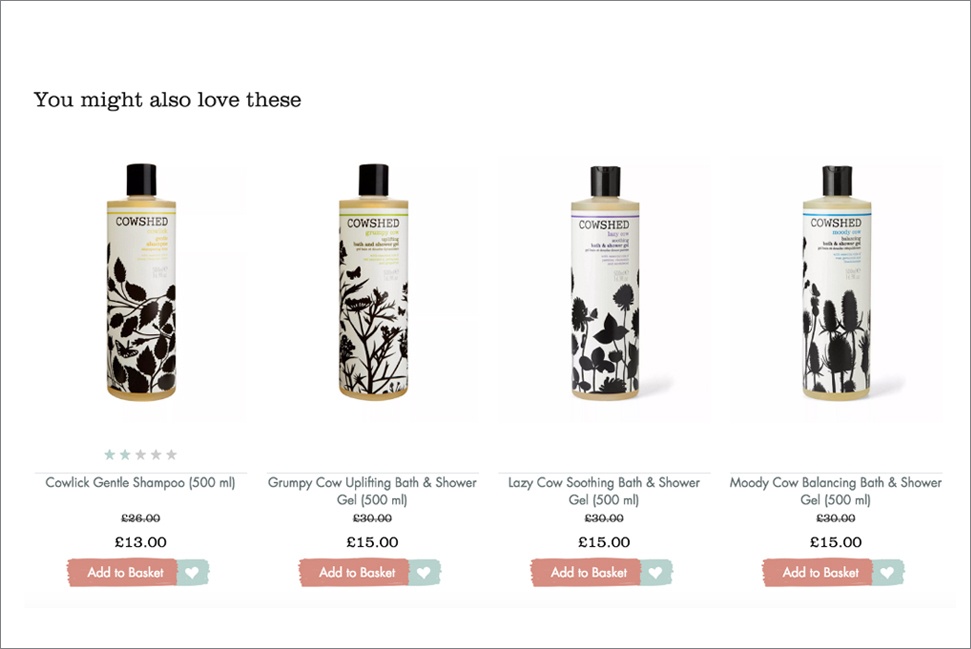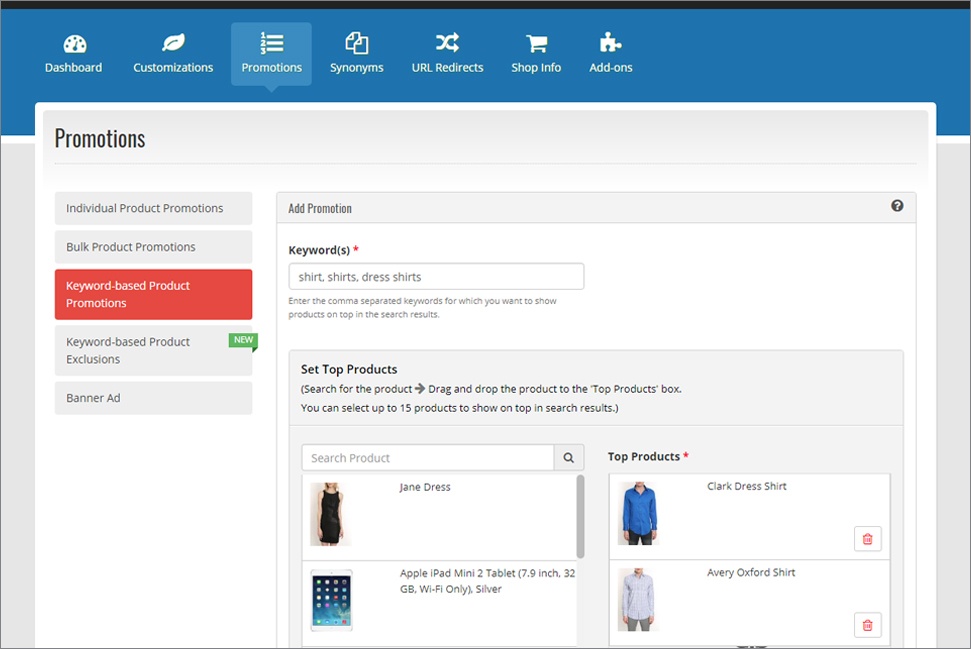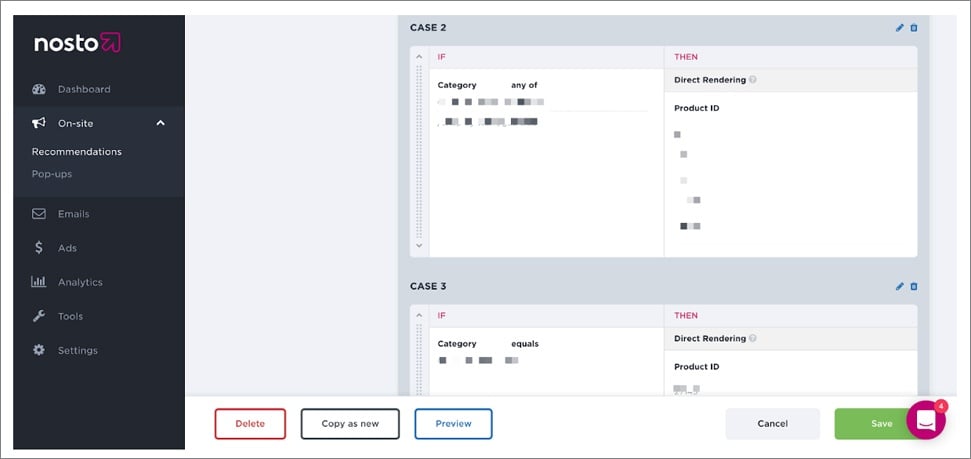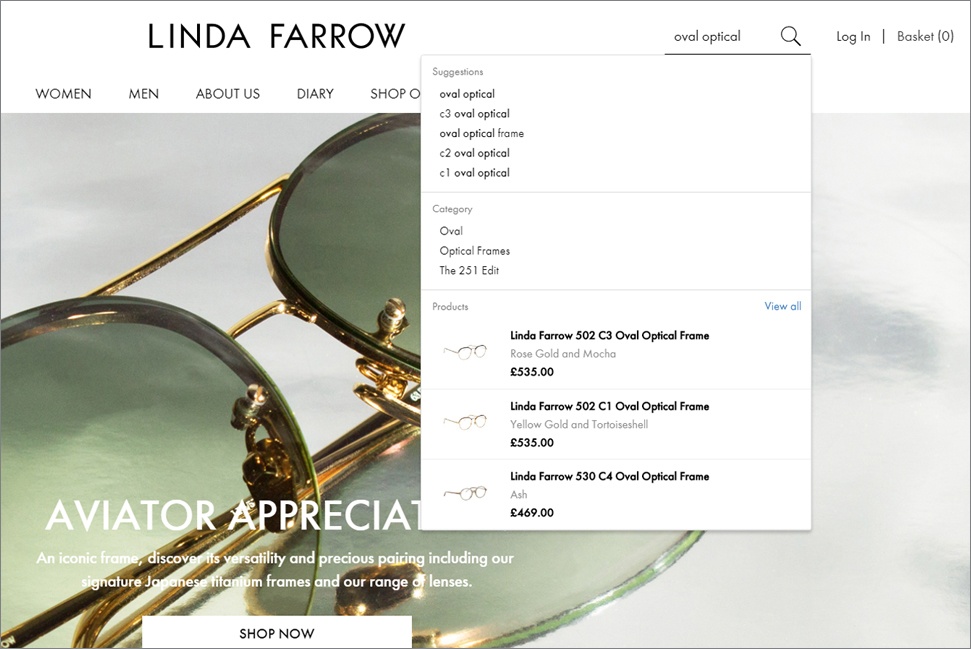Blog
What to look for in search and merchandising solutions
Online retailers across all sectors are continuously looking at the performance of their stores and searching for ways to improve the customer journey, in order to reap the financial rewards associated with an optimised store. The brutal truth is that if you stand still in retail, whether online or offline, you die. From template changes to significant functional enhancements, every change has the potential to make a massive difference, ultimately leading to higher sales and increased customer loyalty. Two areas that are currently capturing the attention of switched-on merchants are on-site search and merchandising. In many cases, those merchants are turning to third-party providers for best practice solutions that can be simply dropped into their existing ecommerce platforms.
In recent years, there’s been a huge surge in demand around machine learning and AI technology in the eCommerce space, with retailers wanting various areas of their store to be influenced by more than just the data they possess around products and customers.
Search and merchandising (particularly visual merchandising and product recommendations) are two of the core areas that have become synonymous with AI-based technology, with lots of third parties providing some level of personalisation and machine learning and most eCommerce platforms not providing this kind of functionality natively.
The benefits of choosing third-party solutions
The vast majority of eCommerce platforms on the market are looking into introducing some level of AI into these areas, but are a long way away from releasing anything substantial – leading to most merchants looking at bringing in a third party solution. Commissioning a bespoke solution is also not a practical or cost-effective solution.
A number of third-party solutions providers have recognised this dilemma, and have brought to market some advanced integrated solutions with relatively straightforward integrations into all of the major eCommerce platforms. With fixed monthly license fees, best of breed technology and dedicated support teams, these third-parties deliver some excellent functionality that can boost conversion rates, average basket values and repeat orders by a phenomenal amount.
Our partner NOSTO (also fellow Scandanavians) are a really strong example of a third party solution that have been adopted by a huge number of Magento, Shopify Plus and even SAP Hybris merchants. They provide 1:1 level personalisation across product recommendations and a number of other core areas (as well as very flexible machine learning-based rules), as can be seen with the example below.

Another key advantage of using a third-party app for search and merchandising is speed. Having identified the shortcomings of the default functionality within their eCommerce platform, no retailer wants to wait for months for a solution, when they can see just how much revenue is being left on the table through missed sales and frustrated customers. A third-party solution can be integrated quickly and easily, with pre-built integrations available for most major platforms and even other third parties (such as our integration with dotmailer). Configuration is also straightforward and the admin interfaces for these apps are simple to understand, reducing the overhead on your team.

This example is from the Klevu merchant centre, where an underlying rule has been setup for hero SKUs on specific queries.

This example is from NOSTO, where a fall-back recommendation has been created to display specific products if there’s no data to provide personalised recommendations.
Key feature requirements for third-party search and merchandising solutions
For any retailer considering a third-party search or merchandising solution, it’s essential to draw up a list of key requirements, to ensure that the product delivers the maximum functional benefits. Visual merchandising solutions need to provide advanced rules-based logic that allows retailers to design complex merchandising patterns that can be applied to highly specific product groups, and targeted at highly specific customer segments. Ideally, the solution should be able to apply rules across multiple product categories, and there should be fallback logic too, to cater for any products which are not handled through more specific rules.
Here’s a summary of the features I believe a merchandising solution should have:
- Ability to visual merchandise at category level
- Ability to assign hero SKUs at category level, across multiple categories (and at parent category level) and globally (across multiple storefronts where applicable too)
- Ability to apply rule-based logic across core metrics such as units sold, gross revenue, short-term popularity, click-through rate, add to carts, stock availability and any data stored in product attributes (or meta fields / tags etc)
- Ideally you’d also have the ability to provide additional rules for specific customer segments (e.g. promote X group of products to “female purchasers” across X generic categories)
- Ideally you’d then be able to apply this logic across selected product recommendation blocks
- Again, ideally, this would have an additional layer of machine learning applied in real-time based on click-through rates etc and also a layer of personalisation based on how users are interacting with the website (e.g. X products in cart, clicked on X products or filters, visited X categories etc)
- Advanced reporting around products that are performing well (in terms of click-throughs, purchases etc) and category-level reporting
These are just a few examples that I think a premium merchandising solution should be able to provide. Ideally, this would also be able to be extended across other areas of the website, such as banners, popups etc. If you’re using a solution like NOSTO, although they don’t do the core merchandising side of things, they’re able to apply all of this to recommendations and also blocks in things like emails and on content sites.
For search apps, the most important factor, based on my experience with Klevu, to insist upon is natural language processing (NLP). This provides search that is context-aware, and not simply driven by the presence or absence of specific keywords. The increase in relevance and search accuracy for longer tail queries is very impressive, generally leading to the main value that is derived from a third party search.
Coupled with NLP is machine-learning (as talked about above for merchandising), which allows your search function to become smarter over time, as it processes more and more search data, to actively ‘learn’ which results are most relevant and effective. One way that this learning is put to use is the continual processing of spelling errors, synonyms and language variants, to provide a richer language base from which to draw search results. Banishing the ‘no results found’ page, or at least making it far less likely to happen, NLP empowers visitors to move quickly to exactly the products they are looking for, without having to start with a more generic query and refine with filtering etc.
Merchandising is just as important in search results as it is in regular product categories and landing pages, and any robust search app should be able to offer comprehensive rules-based merchandising options too, as per the above requirements.
Here’s a summary of the features I believe a third party search solution should have:
- Advanced boosting logic (ability to apply rules like the above – based on things like sales data, general popularity, product attribute values etc) at a keyword and global level
- Natural language process – ability to extract more context from queries
- Advanced synonym management (e.g. one-way and two-way synonyms)
- Ability to index more product data (e.g. product reviews, additional copy fields, SKU etc)
- Ability to serve content results
- Fast auto suggest experience / javascript overlay interface (to improve the overall experience and speed up the process of finding and purchasing a product)
- Ability to assign recommendations for error queries
- Auto-suggestions for queries
- Ability to personalise products being served based on how the user has interacted with results
- Machine learning of products based on overall behaviour of users – e.g. click-through rates, add to cart, purchases etc
- Ideally some form of catalog enrichment to support the handling of longer-tail queries
- Ability to serve banners across search experience
- Ability to support customer group information in search (e.g. pricing reductions etc)
- Advanced reporting around products that are performing well (in terms of click-throughs, purchases etc) and query performance
These are just some of the features I believe a premium, third party search solution should be able to provide.

If you would like to arrange a demo of Klevu to find out more about our search solution and our upcoming merchandising solution, please book a demo here.


